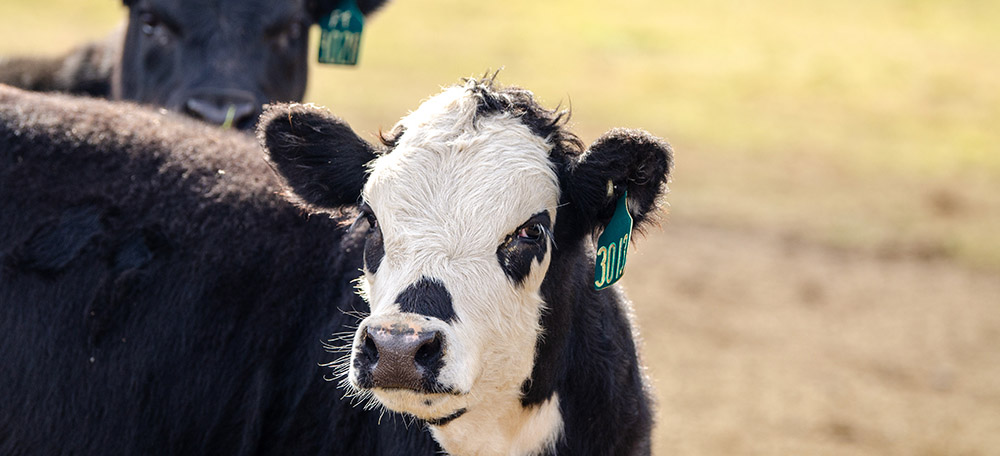
Can You Reimplant?
FDA’s Guidance #191 threatens to affect use of growth implants.
Some cattle folk are concerned about a document issued by the Food and Drug Administration’s Center for Veterinary Medicine (FDA-CVM). “Changes to Approved NADAs – New NADAs vs. Category II Supplemental NADAs” is the title of the document more commonly referred to as Guidance for Industry #191, or simply Guidance 191. NADA is the acronym for New Animal Drug Application, and since growth-promoting implants used in beef cattle production are considered drugs, Guidance 191 could affect producers’ implant strategies, starting June 30, 2023.
In a Cattlemen’s College® session hosted during the 2023 Cattle Industry Convention in New Orleans, Texas Tech University meat scientist Brad Johnson discussed the potential implications of Guidance 191. He explained that the document defines various phases of cattle production and how implant product labels will be required to include reimplanting claims before they can be used multiple times during a specific production phase. This means that unless an implant product label allows for reimplanting, only one implant can be used during each stage of production.
Defining the stages of production
To understand how Guidance 191 might change implanting practices, said Johnson, producers must also understand how FDA-CVM views beef production in terms of five stages, or “variants,” of production. It starts with two variants of suckling beef calves: preruminating suckling calves less than 2 months of age, and suckling calves 2 months of age and older that have begun to ruminate.
“We have a handful of implants that are approved for suckling calves,” said Johnson, noting that dividing the preweaning period into two variants has raised questions about when to implant. “Technically, I think you could give an appropriate implant at each stage — under 2 months of age and after reaching 2 months of age — or twice before weaning.”
According to Johnson, the next two variants of production would fit within what the industry commonly calls the stocker phase. FDA-CVM defines it as a growing period for “weaned steers and heifers (beef and dairy breeds) intended for slaughter that are housed in any setting and receiving their diet from any source.” One growing-cattle variant would include calves grown on pasture, and the other includes growing cattle kept in a drylot and receiving a diet consisting primarily of harvested forages. However, Johnson emphasized that the latter variant description does not apply to grow yards. He described it as that period of time, in winter or early spring for example, when groups of calves are managed in large drylots and staged to go back to grass.
There are multiple implant products approved for use in growing cattle on pasture. Those products can be used as before, Johnson said, adding, “but there’s not a single implant approved for drylot production.”
The final variant is “Growing beef steers and heifers grown in confinement for slaughter.”
This is defined as the period when cattle are confined in group pens and fed a progressively high-energy diet ad libitum as their sole ration until slaughter. FDA-CVM specifically includes grow yards (also called starter yards or backgrounding yards) in this variant, along with finishing yards. When animals enter a grow yard, they have entered the final phase of production that ends when an animal reaches harvest weight.
“So, we’ve got five-weight cattle coming into a grow yard and they are eventually fed up to 1,400 or 1,500 pounds. Technically, they can receive only one implant unless [the implant product] is approved for reimplanting,” explained Johnson, noting how this limitation has caused considerable angst within the feeding industry.
“This is a major deal,” he added. “We’re talking about trying to put 900 to 1,000 pounds of gain on an animal, and it can only be exposed to one implant from the time it goes into the grow yard through finishing.”
Playing catchup
While Guidance 191 and its potential implications come as a surprise to many beef producers, Johnson says it really isn’t new. The effort was initiated in 2008, with the document undergoing repeated revisions before its release in February 2020. Yet another revised version was released in August 2020.
“Nobody really paid much attention at that time,” stated Johnson, noting that Guidance 191 seems to have flown under the radar during the year of COVID.
Reportedly, it was April 2021 that pharmaceutical companies received notification that, by October of that year, implant products not approved for reimplantation must bear labels stating that fact. When the beef industry caught wind of it and made a fuss, the date of compliance was reset for June 30, 2023.
Johnson reminded producers that some implant products are approved for reimplanting according to label directions. Also, implant manufacturers were given opportunity for others to obtain a reimplantation claim. To do so, manufacturers must prove efficacy of reimplanting with that specific product (that two is better than one) and that the product is safe for the animal, the environment and for humans consuming meat from treated animals.
“The important thing is that companies are actively trying to get new label claims to be in compliance with Guidance 191,” stated Johnson.
Editor’s note: Troy Smith is a freelance writer and a cattleman from Sargent, Neb.



